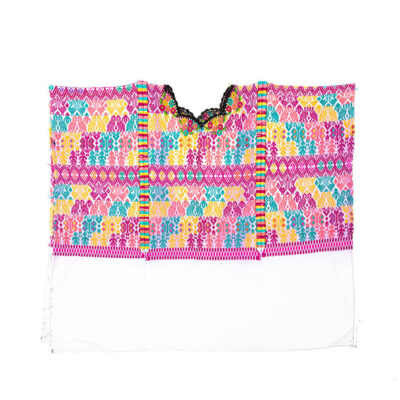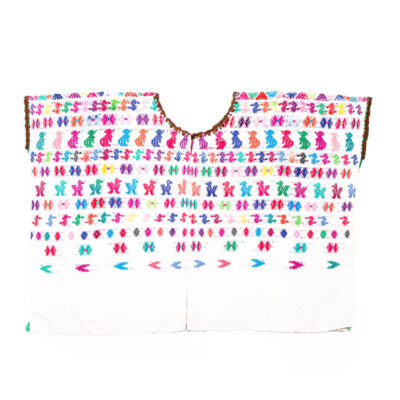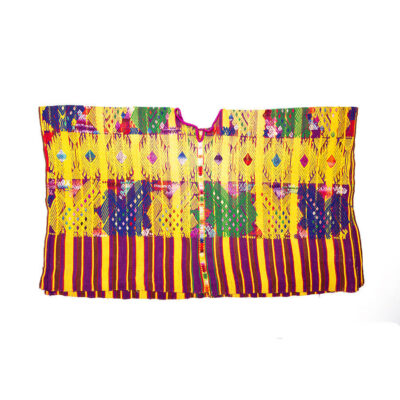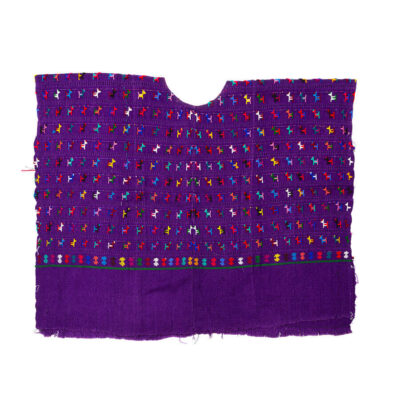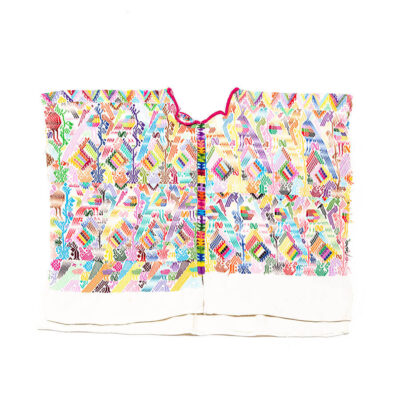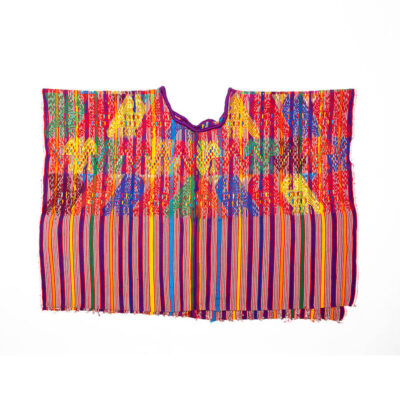Mayan Huipils
What are mayan huipils?
The huipil is the typical costume mainly worn by the indigenous people of southern Mexico and Central America. Although its beginnings date back to pre-Hispanic times, with the arrival of the Spaniards it became compulsory.
The clergymen who accompanied the Spanish conquistadors in the 16th century were scandalised by the fact that the women wore bare-chested dresses. This practice was against Christian morality, so they forced the indigenous population to cover themselves with different garments. To cover the torso, it was decided to wear the huipil.
This garment is also called güipil in Guatemala and Honduras, while in the Yucaaán peninsula (Mexico) it is known as hipil.
How are the mayan huipils made?
The basic cut of the mayan huipil may seem simple. It consists of two pieces of cloth, usually square or rectangular in size, joined together. At this junction there are openings to allow the body to be inserted and arms and head to be taken out of the huipil.
The pieces of textile that are joined together are normally made of cotton thread. The most widespread loom in the area is often used for weaving: the backstrap loom.
The different designs characteristic of each village can be made during the weaving process, or they are embroidered by hand on the textile.
Both the embroidered designs and the colours used are specific to each village. However, the colour of the huipil may vary from year to year. This is due to the fact that many towns make the huipil for that year with the colour of the cloak worn by the patron saint or virgin of the town during that year. Thus, knowing the colour, it is possible to find out the year in which the huipil was made.
Types of mayan huipil
The basic garment of Central American indigenous and mestizo clothing has different types depending on its use. Thus, a distinction is made between huipils that are worn on a daily basis and those that are worn on special occasions. The everyday huipil is the garment used for everyday tasks, while the ceremonial huipil is the one reserved for special occasions.
It is on these special occasions, such as weddings and patron saint festivals, that the ceremonial huipil, much more ornate and usually larger in size, is the one that amazes everyone with its presence.
Current situation of the huipil in Guatemala
Although the mayan huipil is still widely used in rural areas, in larger towns its use is more anecdotal and restricted to the indigenous population.
However, a movement called “Traditional Friday” has emerged in Mexico, which strives both to reintroduce the huipil as a regular garment and to give value to traditionally created garments.
In recent times, various embroideries have been plagiarised by major international fashion brands, and there is a constant struggle to preserve the legacy and rights of use.
Use of the huipil today
Due to the beauty of the embroidery and colours of huipils, they are in great demand today. The use of huipils has been extended both as a garment and to personalise accessories or to use them in home decoration.
Thus, we can find personalised bags and shoes using the textiles of the huipiles to create unique pieces. You can also create unique spaces using these garments as a headboard for your bed, or in any room of your home, using framed huipiles. The choice is yours!
